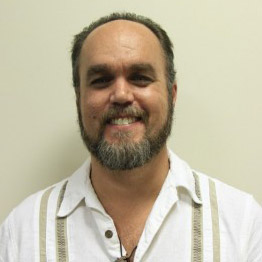Pop quiz: What do the towns of Norcross, Chardon, Pittsburgh, Oakland, Tulsa, Seattle, Aurora, Oak Creek, College Station, Minneapolis, Brookfield, Happy Valley, and Newtown have in common? All of these communities were the sites of a “mass shooting.”
Seattle, Aurora, Oak Creek, College Station, Minneapolis, Brookfield, Happy Valley, and Newtown have in common? All of these communities were the sites of a “mass shooting.”
The last one may have given away the answer, but then again, by the time this is published several days will have passed since the shootings at Sandy Hook Elementary School, and Newtown will have already begun to fade from public awareness.
Here is another one: How many teens and kids were killed this past summer in Chicago? The answer is 38. For those interested, Complex magazine offers a tribute to each of the young people. To reiterate, this was during the summer — a three-month period.
It is beyond me to enter into a debate about gun control, an issue that is complex legally, politically, socially, and in many other ways. I am more interested in how the horrific story of Newtown, Conn., has (deservedly) captured the public imagination, while the bigger picture of violence against children in the United States is largely ignored.
The Children’s Defense Fund released a report this year highlighting children and teens killed by guns in 2008 and 2009. The data, collected by the U.S. Centers for Disease Control and Prevention, shows that the total deaths for those two years was 5,740, “one child or teen every three hours, eight every day, 55 every week for two years.” A few points from the report:
- A total of 5,740 children and teens died in 2008 and 2009, the two years after the Virginia Tech shooting, according to the most recent data from the federal Centers for Disease Control and Prevention. This is the equivalent of one child or teen being killed by a gun every three hours, or eight each day over those two years, or 229 public school classrooms with 25 students each.
- Gun homicide continued as the leading cause of death among Black teens ages 15 to 19. White teens the same age were more likely to die from motor vehicle accidents, followed by gun homicide in 2008 and gun suicide in 2009.
- Black males ages 15 to 19 were eight times as likely as White males the same age and two-and-a-half-times as likely as their Hispanic peers to be gun homicide victims in 2009.
- Non-fatal gun injuries and the physical and emotional trauma that follows afflicted 34,387 children and teens over two years — 20,596 in 2008 and 13,791 in 2009.
- Taking a 30-year snapshot when child gun death and injury data collection began, 116,385 children and teens were killed by firearms between 1979 and 2009—enough to fill 4,655 public school classrooms of 25 students each. Since 1979, America has lost nearly three times as many children and teens to gunfire as the number of U.S. military personnel killed in action during the Vietnam War, and over 23 times the number of U.S. military personnel killed in action in Iraq and Afghanistan (5,013).
Why we as a nation are not outraged by these facts is difficult for me to understand. Perhaps in our media saturated world it takes a particularly jarring juxtaposition of facts to capture our interest. The victims in Connecticut were mostly young children in 1st grade, the community is small and described as “rural” in reports, the area is generally affluent, and I imagine like most of Connecticut, the population is largely white. This makes the tragedy more riveting, more newsworthy somehow, perhaps because it is unexpected.
Many would agree that the deaths of the 38 young people in Chicago were tragic, but I imagine that few outside of that community would describe them as unexpected. This is disturbing to me on many levels. I don’t imagine that it is deliberate per se, but that instead it is born of blindness to the reality that many young people in this nation face danger regularly. Most of them are poor and members of minority groups.
There will be no “special coverage” of the deaths in Chicago. No reporter will interrupt our favorite shows to bring live updates from the president, the governor, or the police. The deaths of children and teens, particularly by violence, should never be normal. Like many, I am at a loss for what to do about the problem, but I have a few ideas.
Let us collectively make the effort to rouse ourselves from a media induced stupor, dependent on the most sensational stories to jar our emotions. Let us look at the facts of violence against young people and address the issues that underlie the problem. Putting aside ideological or political objectives, let’s look at poverty, social injustice, youth culture, access to weapons, degradation of mental health treatment, school safety and any other clues that can help put an end to senseless violence. Horrors like what was experienced in Newtown should never be acceptable to us, no matter where they happen. They are not normal. Enough is enough.


























